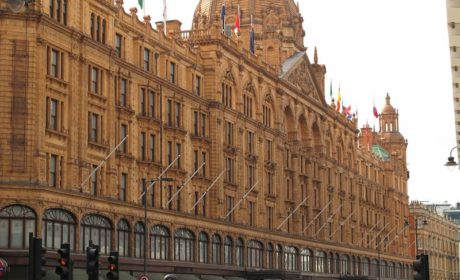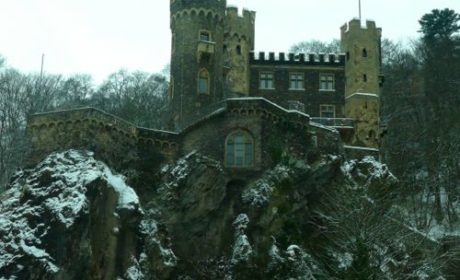Russia seems to be quite the point of contention among the travel community. Some seem to love it, while others swear to never return. Of course, this could be due to differing travel styles.
Large group tours are a common way to visit Russia, and although they can offer a relatively stress-free experience, restrictive travel can be quite frustrating. If organized tours aren’t your thing, the alternative is to strike out on your own to visit some of Russia’s top destinations.
Thankfully, My Itchy Travel Feet Featured Writer, Debi Lander from ByLanderSea, is here with tips on how to visit St. Petersburg without a group tour. She’ll show you how to see the best of this beautiful city.
Why visit St. Petersburg, Russia?
Boomers grew up thinking of the Soviet Union as a political enemy. The Communist-controlled country remained off-limits for travel most of our lives. However, in the late 1980’s the Baltic areas broke away and established independence and contributed to the fall of communism in 1991.

Russian borders were reestablished and gradually opened to foreigners. The country has since emerged as a fascinating cultural attraction.
Today, the entire historic center of St. Petersburg earns World Heritage site status and ranks as one of the most desirable travel destinations in the world. You’ll find some of the most unbelievably opulent palaces, magnificent museums and ornate churches anywhere.
Tips for visiting St. Petersburg without a cruise or group tour
The most popular and easiest method to tour St Petersburg or Moscow is on guided excursions from a cruise ship. No visas are necessary for boat-based passengers. However, the cruise itineraries typically allow only two days in each city. In my opinion, that is not nearly enough.
I wanted an extended visit providing me a chance to see more, indulge the food, experience the ballet, and interact with the people. Therefore, I opted to arrive in St. Petersburg on my own. I’m sure some travelers might feel the need for group tour support, but there is nothing to fear, and I strongly encourage you to consider the option.
Can you travel to St. Petersburg without a Visa?
In a word, No. You must pre-plan if you wish to be admitted within the Russian borders.
A visa is required and to apply, you need to secure flight and hotel reservations first. Seems backward to me, but just accept the rules. After obtaining your reservations, find an agency to assist you with the lengthy application.
Once I submitted my visa application and planned itinerary to the Visa Express Agency, my passport was returned within about two weeks. The agency is very helpful, but I warn you, the application is long, detailed and rather expensive—approximately $300.
Plan your St. Petersburg trip:
My Itchy Travel Feet recommends the following resources for planning your trip.
- Look at Skyscanner to compare flights, then book directly with the airline.
- Research the best places to stay in St. Petersburg at Hotels Combined.
- Make your final hotel choice after checking the reviews at TripAdvisor.
- Purchase trip insurance that covers medical because Medicare doesn’t cover you outside of the U.S.
- Check to make sure that your medical evacuation membership is in force. Travel insurance transports clients to the nearest hospital not to one that they know and trust in the U.S.
Arriving in St. Petersburg

Airport arrival and passage through customs presented no problems. My travel buddy Judy and I chose to rent an apartment in St. Petersburg for ten days. The cost was slightly less than $100 per night.
With two travel days (arrival and departure) we were left with eight days to tour the sights, a number that turned out to be just right. We also saved money by cooking and eating some meals in the apartment.
We arrived late at night so went right to bed after we settled in. The next morning Judy and I walked down Nevsky Prospect, the Avenue des Champs-Élysées of St. Petersburg, and jumped aboard the Hop-on, Hop-off bus to get a feel for the city. Yes, you can purchase tickets ahead of time here.

St. Petersburg is a young European city, built on marshland by Peter the Great starting in 1703. So, instead of learning ancient history, you concentrate on the last 300 years.
The city is nicknamed the Venice of the North, and we boarded a canal cruise that afternoon, passing center city points of interest like the Hermitage, St. Isaac’s Cathedral, the Admiralty, and the Church on Spilled Blood.
I recommend the canal cruise as a relaxing way to view the fantastic architecture, a mixture of Baroque and Art Nouveau, and to connect with the waterways through the city. Find canal cruise tickets here.
Hire a private tour guide in St. Petersburg
We spent the next five days with a pre-planned private tour guide and driver from Insider Tour. Our assigned guide, Valentina (virtually a walking encyclopedia of Russian history and culture), shared her knowledge as she escorted us through the famous landmarks, including those out of town such as the Catherine Palace, Pavlovsky Palace and the Peterhof Palace and Gardens.
Valentina spoke excellent English, and her years of experience added explanations of how sites were used for different purposes during the communist era, not something you’d readily read in a guidebook. While a private or small group tour guide is more expensive, the advantages are many: increased flexibility, site visits based on your interests, no waiting for latecomers or that herded around feeling.
What to See in St. Petersburg
We began with a tour of the Fortress of St Peter and Paul on the Petrograd side of the Neva River. On this July day, locals were sunbathing on a small beach.
We entered the Cathedral; known by its soaring copper needle-nose steeple, to see the tombs of the Romanov Tsars and their families. Unusual mint colored lighting and glittering chandeliers fill the upper space and pink and green Corinthian columns made for a non-traditional Russian Orthodox Church. A central Baroque-style gilded icon screen is a fanciful masterpiece of trumpeting angels, twisted pediments, and a central icon.
The last Tsar, Nicolas, Alexandra and their children were held captive and sent to Siberia. They all were executed by rifle during the Russian Revolution in 1918. However, the tragic event left many questions, and their remains were not buried in the church until 1998. The remains of, Alexei, the only son and a sister were later identified and buried in 2015.
Touring the Hermitage

Another day we toured the Hermitage; one of the largest art museums in the world started by Catherine the Great. The vast collection is mainly housed in the buildings of or near the Winter Palace, much like the expansive Louvre.
One could easily spend a multitude of days within the courtyards and galleries, plus the throne room, malachite room, and a golden drawing room. One hallway is copied after one in the Vatican Museum. Art lovers will discover hundreds of priceless masterpieces from all the great, world-renowned artists as well as ancient relics.

Personal highlights included an enchanting mechanical Peacock Clock given to Catherine in 1781. It’s sheer whimsy resting within Catherine’s private entertaining area dripping with crystal chandeliers, gold leaf accents and mirrors.
Stopping by St. Isaac’s Church
St. Isaac’s Church, designed in 1818, is the largest Orthodox basilica and the fourth largest (by the volume under the cupola) cathedral in the world. I felt dwarfed within the high-ceiling structure covered in fresco and mosaics.
The site’s feeling of strength comes from its 48 colossal marble columns. Little wonder the stronghold’s basement was chosen to store many of the royal treasures during the Nazi invasion.
The icons in the church remain very dear to the Russian people. Difficult to imagine, but the church was deconsecrated and used as a museum of atheism during the Soviet era.
Exploring Catherine Palace

The extravagant Catherine Palace sits in Tsarskoye Selo or the Tsar’s Village, over an hour outside the city. The stunning elongated structure with 35 staterooms is a must-see destination. One ballroom is larger sized, but similar to the famous Hall of Mirrors in Versailles.

The imperial palace also houses the mysterious and famous Amber Room, a room of amber treasures stolen by the Nazi’s and lost post-war. The currently restored room took over 25 years and millions of dollars to painstakingly recreate.
The one-of-a-kind room is nearly an exact replica of the original. The amber’s glow was so strong it felt like sunlight on my skin. I can only imagine how gorgeous the room must be in evening candlelight.
Visiting more Russian palaces

Pavlovsky was Paul’s Palace, presented to Catherine the Great’s son. He and his wife traveled around Europe incognito, as the Comte and Comtesse de Nord, purchasing French clocks, Sevres porcelain, tapestries and furniture for their home. Paul had a passion for military items and Maria’s choices are definitely feminine.

Peterhof Palace is similar in opulence and grandeur to the Catherine Palace, but its Peterhof’s Gardens that are compared to Versailles’ fountainous spread. The World Heritage site includes 500 acres, over 200 statues and 144 innovative and running fountains, many fed by underground springs. The overwhelming extravagance is well beyond expectations.
Admiring Church on Spilled Blood

If I must choose, I’d name my favorite spot as the Church of the Resurrection of Christ, better known as the Church on Spilled Blood. The structure stands on the location where Tsar Alexander II was shot. He died afterward in the hospital.
The shrine was erected in his memory in the Old Russian style of architecture with onion-shaped domes. The building called to me with its fanciful collage of design and color, inside and out.
The intricate mosaics were created to make a powerful impact on visitors, and they do, especially for those of the Russian Orthodox faith. Warning: be prepared for a stiff neck from staring at the grandeur of art on the ceiling and high walls.
Don’t miss the Faberge Museum

Judy and I also visited the Faberge Museum joining an English tour at a pre-scheduled time. The museum, a renovated mansion, allows visitors to scrutinize the famous Faberge eggs presented as Easter gifts from the Tsar to his wife and mother.
The jewel-encrusted eggs open to reveal surprises such as a carriage that moves, or flower petals that open. The intricate eggs, some with micro-miniature portraits, are a prime example of the riches held by the royal family during a time when the peasants had nothing. Fortunately, these handcrafted treasures were rescued and saved from destruction during the Russian Revolution.
Additional things to do in Petersburg
In addition to our guided excursions, we still had time to explore on our own. We made a short journey to photograph the ten massive granite Atlantes statues holding up a portico on the Hermitage. Supposedly if you rub their mammoth toes, they grant wishes. Of course, we wished and rubbed!

We also chose to use the subway and a bus to return to Peterhof Gardens as we encountered a rainstorm during our first visit. We took the Hydrofoil (as suggested by Valentina) directly back to St. Petersburg, adding ease and a Gulf of Finland adventure to our itinerary.
Judy and I also returned to St. Isaac’s another morning to climb to the top of the dome for a scenic view of low-lying city and all the waterways.

Two of my favorite events were attending a performance of the ballet and another evening at the symphony. Music and dance, especially ballet, must be part of the Russian DNA. Residents from all backgrounds attend the lively shows when they can.
After the performance, Judy and I joined many others crowding on to the city buses to return home. We felt like we belonged and had almost become part of the community—still another advantage of traveling on your own.

Russia burns with a fiery soul, and her people carry it in their hearts. In general, we found them friendly and helpful. Many speak English, especially those under 50.
All economic levels use public transportation (which is excellent and downright cheap at about 50 cents per ride). They enjoy vodka, the arts and music.
Restaurants are inexpensive compared with other European cities, but tickets for the arts are more comparable to the US. I can’t tell you about late nightlife because I didn’t experience it.
I came away with a much greater understanding of Russian history, the current culture and how it has changed since the fall of communism. The Russians we met were no different from other Europeans; they wish for freedom and strive to raise their families as best they can. Without politics, it seems, we are all alike.
A Few Tips:
- I sadly did not allow time to tour Moscow. In retrospect, I believe that was a mistake.
- Plan ahead and allow time to investigate itineraries and get your visa.
- Upon arrival, have your host hotel order a taxi for you. You’ll be told the cab’s identifying number. Do not hire drivers hanging around baggage pick-up offering you a ride. They will overcharge.
- Credit cards are accepted, but you’ll still need to pull out some Russian Rubles from an ATM.
- Some of the best tourist shopping is near the Church on Spilled Blood and outside the Catherine Palace.
- Beware of pickpockets, a sad but true situation, especially along Nevsky Prospect, the main drag.
- During the summer months or White Nights, the sun doesn’t set until around 11:00 pm and rises again around 2 or 3:00 am.
- Many signs are in English as well as Cyrillic. Learn to recognize the word “pectopah” which means restaurant and “bap” meaning bar.
Feeling adventurous? Here’s how to plan a self-guided tour in St. Petersburg.
Save to Pinterest




